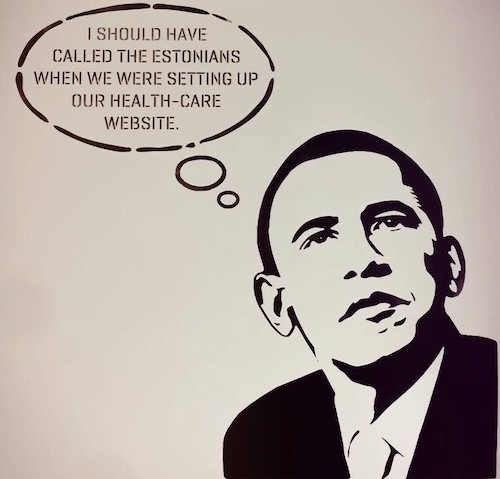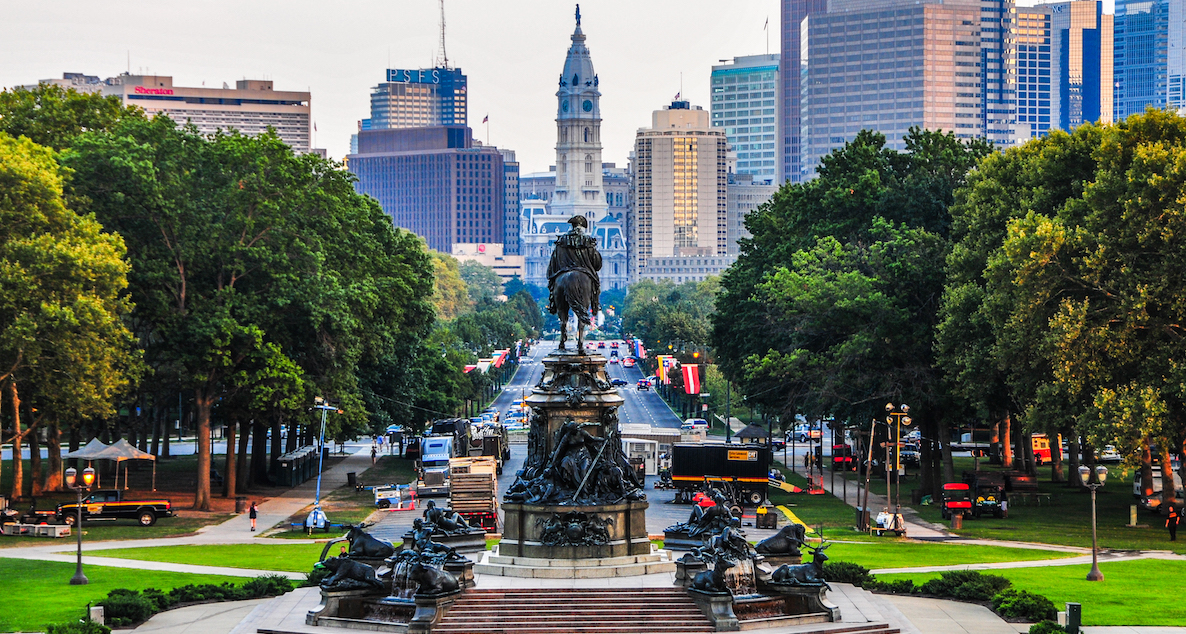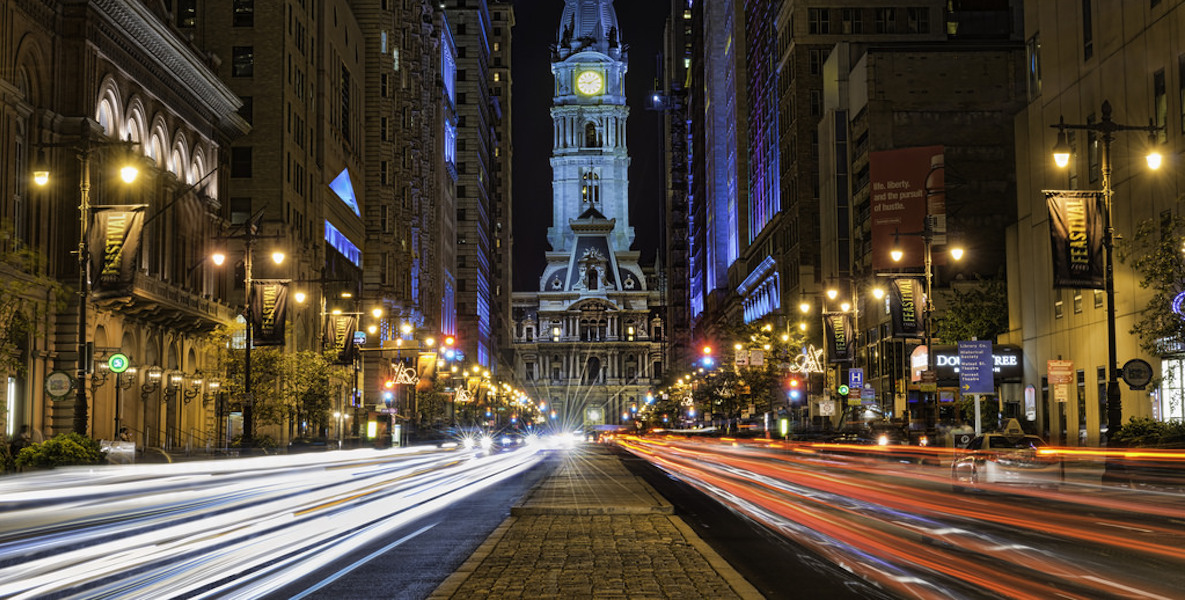Philadelphia is stuck in an existential traffic jam of our own making.
Just like everything else in the world, roadway congestion in Philly seems to be getting worse by the day. Center City and its periphery are swelling with new construction, new jobs, and the inrush of new professional workers, overwhelming our already treacherous streets with delivery trucks, taxis, Ubers and Lyfts, cranes and concrete mixers, and thousands of distracted pedestrians trying to avoid being squashed by all of the above while still staring at their phone screens.
The consequences of this chaotic new reality manifest in a 20 percent increase over the past four years in automotive travel time from Broad to 23rd Street via Chestnut, to an intolerable number of deadly collisions; the Bicycle Coalition of Greater Philadelphia counted no fewer than 103 traffic fatalities in 2018.
In response to the mounting crisis, City Council is putting forth a ballot question asking for voters’ approval to establish a new agency of Public Safety Enforcement Officers (PSEOs). Per Council President Darrell Clarke’s resolution, PSEOs would patrol the city’s streets, enforcing Vision Zero violations and quality-of-life infractions.
To the extent that a dedicated squad of PSEOs can reduce congestion and save lives, then the initiative is laudable, and in keeping with similar agencies already at work in peer cities like Washington D.C., Baltimore and New York. But simply putting more traffic cops on the street fails to anticipate the cataclysmic changes that cities like Philadelphia will be forced to contend with in the days and years ahead.
Our challenge is straightforward enough: to make our political system stop throwing up roadblocks to progress, and start helping us build expressways.
As global concentrations of power increasingly shift from nation states to a handful of cities, the race for primacy among them is picking up steam. And the cities best positioned to win that race won’t be those that rely on outmoded methods and mentalities to meet unprecedented economic, political and ecological challenges, but those that, whether by diligent planning or panicked desperation, adopt and integrate the radical new technologies that are transforming the world minute by minute.
I wrote recently in these pages about China’s early dominance in the implementation of narrow artificial intelligence (AI). Leveraging the force of the world’s biggest population, an unbridled enthusiasm among that population for engaging with data-capturing consumer technologies, and an attentive, risk-welcoming political apparatus, China is leading the way in the application of narrow AI to almost every facet of human life and social interaction. Already, Chinese technologists and entrepreneurs, with the support of government officials at every level, are making dramatic breakthroughs in everything from financial services to medical diagnostics.
And it should be no surprise that China is also applying its burgeoning prowess in AI to the dynamics of its cities. No other country on the planet has experienced urbanization at the pace of China in recent decades. Barely 40 years ago, China was a largely agrarian country, populated by impoverished rural peasants eking out an existence under the fist of an oppressive, lapidary Communist government. But with the advent of economic liberalization and the introduction of open markets, its urban centers exploded. Gone are the days when municipal thoroughfares bulged with scores of cyclists pedaling through town. Now, the streets of China’s cities (there are more than a hundred with populations greater than one million) are choked with cars driven by office workers commuting to their jobs in one of any the thousands of corporate skyscrapers that seem to be sprouting up like weeds.
![]()
While China’s rapid urbanization indisputably lifted hundreds of millions of people out of poverty and changed not only the standard of living but the way of life for many millions more, this overwhelming speed and scale of the transformation has presented major new challenges, a fact that has not been lost either on the country’s political class or on its increasingly influential entrepreneurial class. In the past few years, China’s government has launched and championed a “mass innovation and mass entrepreneurship” campaign to accelerate technological growth, particularly in AI, with torrents of subsidies, government contracts, innovation corridors and other substantial carrots.
In his landmark book, AI Super-Powers: China, Silicon Valley, and the New World Order, Chinese AI expert and former Google executive Kai-Fu Lee describes “ambitious mayors across China scrambling to turn their cities into showcases for new AI applications. They’re plotting driverless trucking routes, installing facial recognition systems on public transportation, and hooking traffic grids into ‘city brains’ that optimize flows.” These municipal leaders, many of whom, it bears emphasizing, oversee cities with populations larger than most American states, are given resources, latitude, and more than a little bit of pressure from the national government to make bold investments in technological innovation. Plenty of those bets never pay off, but Lee acknowledges that a certain amount of inefficiency is inevitable when a whole country is scrambling to undertake big things for the first time.
It’s precisely that license to take chances and to fail in the attempt that distinguishes China’s political praxis from America’s. Lee writes, “While America’s combative political system aggressively punishes missteps or waste in funding technological upgrades, China’s techno-utilitarian approach rewards proactive investment and adoption.” A case in point is the Solyndra debacle of 2011. After the California-based solar panel company, which had been the poster child of President Obama’s green energy financial stimulus plan, went bankrupt, Obama’s political opponents lacerated him, spending millions to pillory his feckless “venture socialism” in the run-up to the 2012 election.
Today, Estonia is not only the Silicon Valley of the Baltics, but arguably the most connected nation in the world. In fact, Estonia has enshrined the right to internet access in its post-Soviet constitution.
For a country that so zealously burnishes our own reputation as a nation of risk-takers and innovators, we are aggravatingly quick to pounce on any politician who takes a risk that doesn’t pan out. This hypocrisy is just one aspect of America’s toxic political universe, but we can’t pretend it doesn’t ooze down to the municipal level too. In Philadelphia, as in so many archaic machine towns, entrenched interests in the form of union bosses, their lackeys and various other old economy power players exert an iron grip on policy and policy makers alike to ensure the maintenance of a self-serving gravy train. Against the swift and brutal consequences of bucking the status quo, even forward-thinking elected officials are quickly co-opted or broken down and forced into retreat.
The astounding metamorphosis of China’s cities in the 21st century may be a result of that country’s wholesale economic and political re-engineering, but it’s not a phenomenon entirely unique to the People’s Republic. For another illuminating example of the catalytic potential of a shared commitment to innovation between the public and private sectors, we ought look to the hinterlands of Northern Europe.
![]()
On the wall of a casually futuristic co-working space somewhere in Tallinn, Estonia’s Telliskivi Creative City is a stenciled mural reproducing an iconic image of Barack Obama. The mural depicts the former president’s face, as lifted from Shepard Fairey’s famous “HOPE” campaign posters, looking pensive and determined. In the Telliskivi version, a thought bubble floats over Obama’s head. The text inside reads, “I should have called the Estonians when we were setting up our health-care website.”
It’s an odd dig; very specific, not particularly punchy in its delivery, a bit dated, and highly unlikely to reach anyone whose feelings might be hurt by it. And it would be easy to dismiss as the quaint boast of a few Nordic nerds, but for the fact that it’s probably true: Obama should’ve called the Estonians before the calamitous roll-out of healthcare.gov. Far from being a former Soviet backwater with delusions of grandeur, the smallest Baltic State has revealed itself as a bold pioneer in tech investment and digital governance, and offers more than a few lessons for Philadelphia.

With the collapse of the Soviet Union nearly three decades ago, Estonia, much like its fellow satellite states, suddenly found itself cut loose from the authoritarian tether of its former patron and left largely to its own devices. Within a few years, the tiny nation somehow gained the profound insight that the Internet was the way of the future, and went all in on the latest technological revolution. Today, Estonia is not only the Silicon Valley of the Baltics, but arguably the most connected nation in the world. Working in concert with coders, computer scientists and web developers, the country can now boast that 98 percent of all government services are accessible online. In fact, Estonia has enshrined the right to internet access in its post-Soviet constitution.
Taking the leap to reinvent itself as a techno-utopia has paid major dividends. With a population of only 1.3 million (some two hundred thousand fewer than Philadelphia’s), Estonia is home to not one but four tech unicorns—start-ups valued at more than $1 billion. That claim to fame has made the country a mecca for ambitious and adventurous tech entrepreneurs, so much so that Estonia has created a streamlined path to quasi-citizenship for foreign innovators inclined to plug in and log on there.
Unlike massive China and miniscule Estonia, we may not have the dubious advantage of having survived the 20th Century under the yoke of stultifying socialist rule, and to be sure, we face plenty of deep-seated and uniquely Philadelphian problems, but the examples of these two very different countries show that it is possible to awaken from a long political stupor. The presence of top flight academic, research and medical institutions in our city belies any contention that Philadelphians lack the brainpower, vision and drive to turn this town into an elite city of the future. Our challenge is straightforward enough: to make our political system stop throwing up roadblocks to progress, and start helping us build expressways. It’s our only way out of this traffic jam.
Header: Dan Anderson via Flickr







